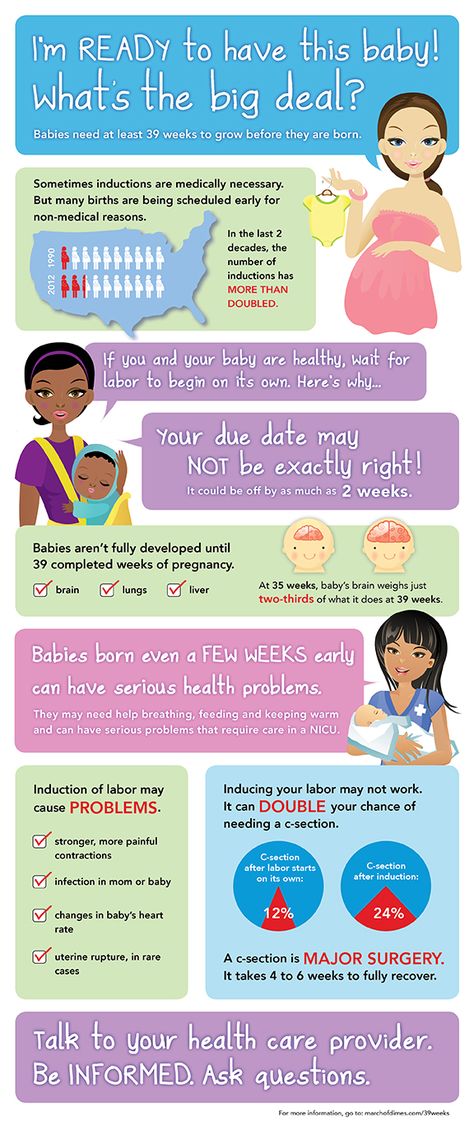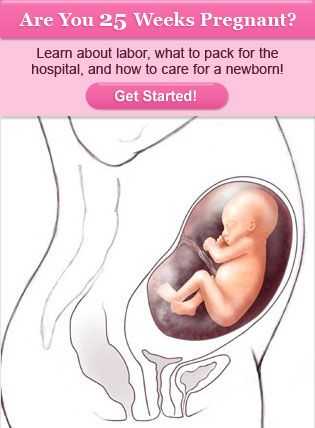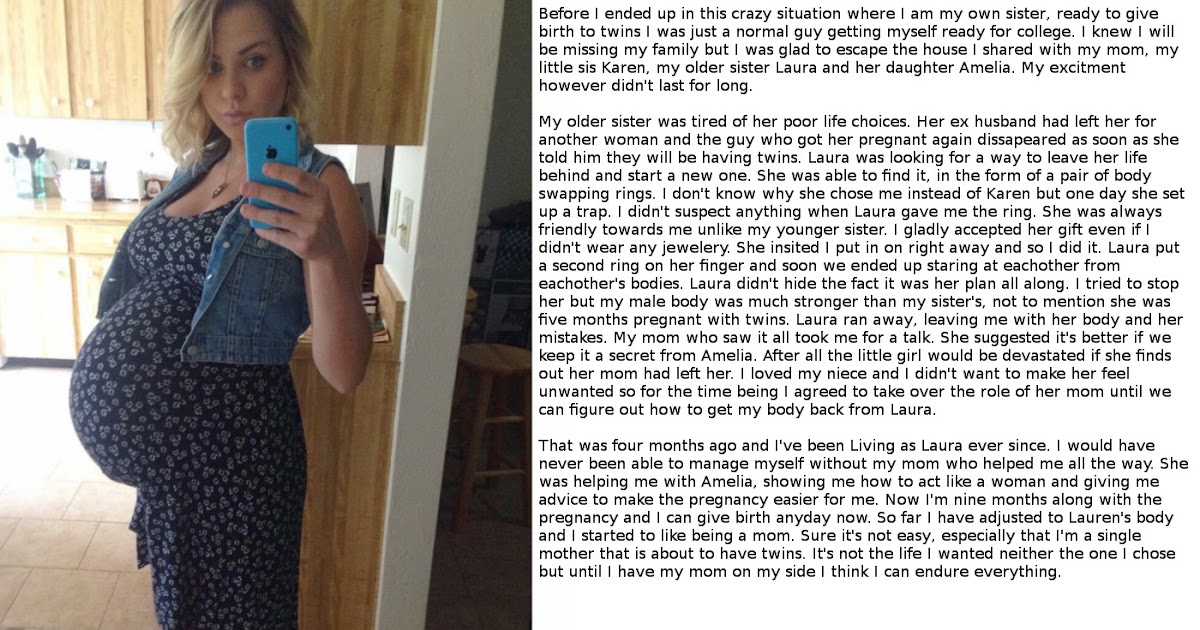How long can a blighted ovum last
Blighted Ovum Miscarriage - Meaning, Treatment, Causes
A blighted ovum is a miscarriage that occurs very early in pregnancy. The fertilized egg is unable to develop into an embryo after it has attached to the uterine wall. This type of miscarriage usually occurs within the very early stages of pregnancy (weeks 2-6), often before a woman even knows she's pregnant.
Still, losing your baby, even at an early stage of pregnancy, can be devastating for the parents, far more so than people appreciate who have not been through it.
Unfortunately, blighted ovum miscarriages are not rare. It is the leading cause of miscarriages. A blighted ovum is one of the more common forms of miscarriages and is invariably associated with a chromosomal abnormality.
Thankfully, as we discuss below, having an early miscarriage like this does not have any impact on having a healthy pregnancy in the future. This article addresses the causes of blighted ovum, treatment for it, and the long-term outlook for fertility after a miscarriage from an anembryonic pregnancy.
What Is a Blighted Ovum Miscarriage?
A blighted ovum occurs very early in the process of embryonic development. When sperm reaches an egg, the egg becomes fertilized and begins the rapid production of new cells within only a few hours. With a normal pregnancy, the fertilized egg will grow from a clump of cells into an embryo by the 10th day of development.
The embryo will then implant itself into the wall of the uterus. This triggers the release of high levels of pregnancy hormones in the body and causes the placenta to start developing to support the fetus. The fetus will continue to grow over the next few weeks, and around the 6th week of pregnancy, it will finally be visible on an ultrasound.
When blighted ovum occurs, this initial process is not completed. Sometimes the fertilized egg is not able to develop into an embryo but still implants itself into the uterus. In other cases, the transition from fertilized egg to embryo was successful but the embryo stops developing a few days after attaching.
For a doctor to diagnose a blighted ovum, an ultrasound will be performed and the doctor will identify an empty gestational sac with no signs of an embryo. This empty sac can usually be confirmed by the 8th week of pregnancy when the embryo would normally be visible. How long you carry a blighted ovum depends on what stage the blighted ovum miscarries.
What Causes Blighted Ovum Miscarriage?
There are several causes of a blighted ovum. The common thread is any anembryonic pregnancy is a genetic error or a genetic mistake.
From research conducted on multiple women who experienced a blighted ovum, there is a consensus that the wide majority of blighted ovum miscarriages are due to abnormal chromosomes[2]. The fertilized egg or embryo might be missing chromosomes or developed too many. This disrupts the normal process of development. In rare cases, genetic mutations can also be a cause for a blighted ovum, specifically for embryos that stopped developing after attaching to the uterus.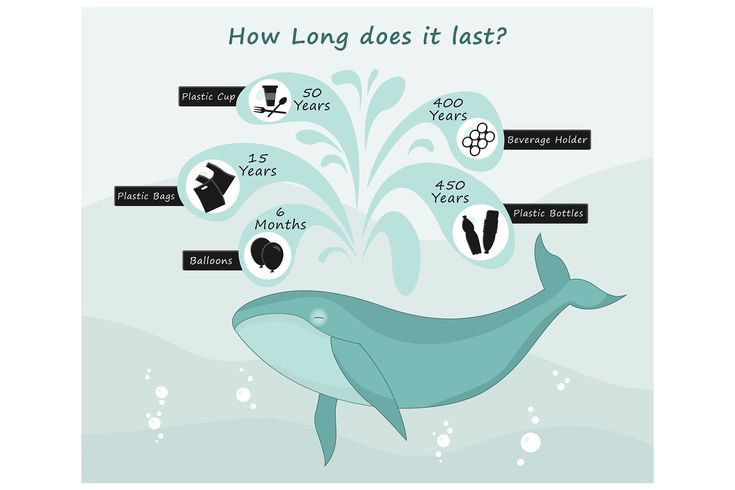
A blighted ovum is similar to other miscarriages in the sense that there was some developmental abnormality that ultimately caused the pregnancy to fail. It can create feelings of loss and despair, but it's important to understand that there is no way to prevent it from happening and women should not blame themselves. For early miscarriages, there is often no way to know that something has gone wrong until your doctor identifies it. If you are a woman reading this, you have already heard this but you should hear it again: it is not your fault.
How Common is Blighted Ovum Miscarriage?
Accurate occurrence rates for blighted ovum miscarriages are understandably difficult because many women choose not to share their miscarriage stories. However, miscarriages are actually very common, with around 10-20% of pregnancies ending in miscarriage[4]. In that statistic, early miscarriages are most prevalent with 80% of them occurring within the first 12 weeks. Additionally, many women have one or multiple miscarriages before they have a normal pregnancy.
Additionally, many women have one or multiple miscarriages before they have a normal pregnancy.
The statistics for how common blighted ovum is can be hard to measure due to difficulties diagnosing the condition. Since it occurs so early, women may not even know they were pregnant and do not notice the miscarriage happening. From what is known, experts believe blighted ovum accounts for a third of miscarriages that occur before 8 weeks gestation[3].
Blighted Ovum Symptoms
Even though the embryo is not developing properly or has stopped altogether, a woman may experience early pregnancy symptoms since the body has recognized something attached to the uterus.
Until the embryo has been expelled from the body, hormones are still being produced and pregnancy tests can have positive results. A woman may have morning sickness, bloating, sore breasts, and other common symptoms that show up during the first weeks of pregnancy. However, some signs may indicate a woman has a blighted ovum or is experiencing a miscarriage:
However, some signs may indicate a woman has a blighted ovum or is experiencing a miscarriage:
- Abnormal heavy bleeding
- Severe abdominal cramping
- An ultrasound that shows an amniotic sac is but is missing an embryo
A blighted ovum is confirmed when a sonogram shows no fetal heart tone.
Treatment for Blighted Ovum
After you have been diagnosed with a blighted ovum, there are a few different treatments available depending on how your body reacts to the attached egg or embryo.
For some women, there may be no treatment at all, as the body recognizes that there is no development and naturally passes the embryo by expelling the contents of the uterus. In these cases, the miscarriage will be similar to a heavy period, which can feel completely normal for someone unaware they had a blighted ovum.
If the blighted ovum is diagnosed but the body continues to act pregnant and releases hormones, your doctor may wait a few days to see if the body adjusts and eventually passes the embryo. If the body continues to keep the embryo attached despite no development, medication or surgery can be used to clear the contents of the uterus. Medication like Cytotec can induce a miscarriage which causes temporary heavy bleeding. A brief surgical procedure can be also be given by dilating the cervix and manually emptying the uterus.
If the body continues to keep the embryo attached despite no development, medication or surgery can be used to clear the contents of the uterus. Medication like Cytotec can induce a miscarriage which causes temporary heavy bleeding. A brief surgical procedure can be also be given by dilating the cervix and manually emptying the uterus.
Can A Blighted Ovum Give a False Positive Pregnancy Test?
A blighted ovum may occur before a woman is aware she is pregnant. What often happens in these cases is the placenta will continue to develop after the miscarriage. This is called an anembryonic pregnancy in which the body does not adapt to the miscarriage and continues to prepare for the baby. This will often lead to a false positive pregnancy test.
Can I Get Pregnant Again After a Blighted Ovum?
Miscarriages can be scary and make you feel like something is wrong with your fertility, but in most cases, this is not reality. Miscarriages are a natural part of pregnancies and often have no bearing on how fertile you are. Having one anembryonic pregnancy is usually no cause for concern. Normal pregnancies after a blighted ovum are normal. Statistics show you will likely have a normal and healthy pregnancy in the future, even immediately after a blighted ovum.
Miscarriages are a natural part of pregnancies and often have no bearing on how fertile you are. Having one anembryonic pregnancy is usually no cause for concern. Normal pregnancies after a blighted ovum are normal. Statistics show you will likely have a normal and healthy pregnancy in the future, even immediately after a blighted ovum.
In a study involving women with early miscarriages, around 80% were able to have a successful pregnancy within the next five years[1]. The reason for these success stories is that treatments used for blighted ovum also have no negative effects on future pregnancies, even for surgical procedures.
If you have experienced multiple blighted ova or are struggling with miscarriages, there may be a different underlying problem, such as a hormone imbalance or genetic mutation. Your doctor can run tests to identify possible causes for complications in development.
How Long Can You Carry a Blighted Ovum?
When deciding how long to carry a blighted ovum, you are trying to balance the ease and low risk of a natural miscarriage (Dilation and Curettage or D&C surgery, for example, has some risks) versus the risk of infection if you do not have a natural miscarriage. Some suggest you can wait between 9 to 11 weeks with an anembryonic pregnancy.
Some suggest you can wait between 9 to 11 weeks with an anembryonic pregnancy.
But you want to discuss with your doctor who will be able to best gauge the optimal path for you.
How Long Until I Can Try to Get Pregnant After a Blighted Ovum?
Doctors often suggest women wait three months before attempting to conceive after a blighted ovum while others say less. You should talk to your doctor.
Do the COVID-19 Vaccines Cause a Blighted Ovum?
Three studies have been published that showed women are not at higher risk for a miscarriage after taking a COVID-19 vaccine.
Sources and Additional Reading
Chaudhry, K., et al. (2021). Anembryonic Pregnancy. StatPearls [Internet]. StatPearls Publishing.
This article provided an overview of a blighted ovum. It detailed its risk factors, clinical presentation, treatment and management options, differential diagnosis, and prognosis.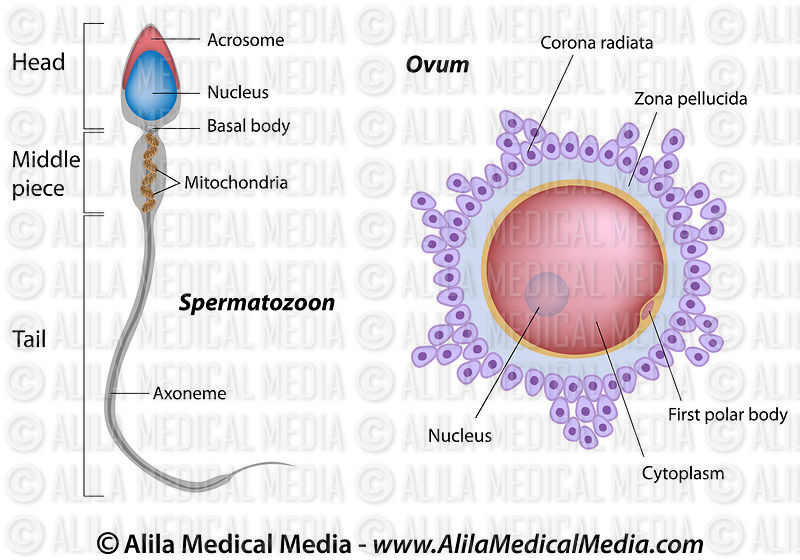 The researchers also reported on patient education and the enhancement of healthcare team outcomes.
The researchers also reported on patient education and the enhancement of healthcare team outcomes.
Sanni, R. R., et al. (2020). Blighted Ovum: A Case Report. Women’s Health Open Journal.
This case study looked at a late 20-something woman who suffered a blighted ovum. The researchers recommended healthcare providers should know how to properly manage and treat a blighted ovum.
Andriani, F., & Mardhiyah, I. (2019, March 22). Blighted ovum detection using convolutional neural network. AIP Conference Proceedings, 2084(1), 020012.
This article looked at the use of the convolutional neural network method to timely detect a blighted ovum. The researchers reported that the algorithm implementation’s accuracy was less than 60 percent. However, they also reported that this was because of the lack of data and the difficulties of distinguishing between blighted ovum and non-blighted ovum data.
Aroke, D., et al. (2018). Blighted ovum and tubal pregnancy: a rare form of heterotopic pregnancy: case report. BMC Research Notes, 11(1), 1-4.
BMC Research Notes, 11(1), 1-4.
This case study looked at a 25-year-old woman who suffered both a blighted ovum and an ectopic pregnancy. She underwent surgery. Her pregnancy was ultimately uneventful. The researchers concluded that blighted ova and ectopic pregnancies could occur at the same time. They recommended timely diagnoses and prompt management that could yield a favorable prognosis.
Horner-Johnson, W., et al. (2017). Live birth, miscarriage, and abortion among US women with and without disabilities. Disability and health journal, 10(3), 382-386.
This study looked at the live birth, miscarriage, and abortion rates among American women with and without disabilities. The researchers found that women with disabilities were less likely to have live births compared to women without. However, they reported that these differences were insignificant when controlling for covariates. They also found that women with complex limitations were more likely to suffer miscarriages. The researchers concluded that disability status did not have a significant impact on pregnancy outcomes.
The researchers concluded that disability status did not have a significant impact on pregnancy outcomes.
Smith, L.F., et al. (2009). Incidence of pregnancy after expectant, medical, or surgical management of spontaneous first trimester miscarriage: long term follow-up of miscarriage treatment (MIST) randomised controlled trial. BMJ, 339.
This study looked at whether three early miscarriage management methods impacted future pregnancy rates. The researchers found that the live birth rates across all three groups were similar. They concluded that miscarriage management methods did not impact subsequent pregnancy rates.
Lathi, R. B., et al. (2007). Cytogenetic testing of anembryonic pregnancies compared to embryonic missed abortions. Journal of Assisted Reproduction and Genetics, 24(11), 521-524.
This study compared the abnormality rate detected by cytogenetic testing in first semester miscarriages involving a fetal pole or a blighted ovum. The researchers found that 65 percent of all miscarriages showed abnormalities. They also found that the rates were 58 percent in miscarriages involving a blighted ovum and 68 percent in miscarriages involving a fetal pole. The researchers concluded that cytogenetic testing would help determine abnormalities during pregnancy.
They also found that the rates were 58 percent in miscarriages involving a blighted ovum and 68 percent in miscarriages involving a fetal pole. The researchers concluded that cytogenetic testing would help determine abnormalities during pregnancy.
Regan, L., & Rai, R. (2000). Epidemiology and the medical causes of miscarriage. Baillieres Best Practice & Research Clinical Obstetrics & Gynaecology, 14(5), 839-854.
This study summarized a miscarriage’s epidemiology and medical causes. It also discussed the genetic abnormalities that contribute to a miscarriage.
Blighted Ovum (Anembryonic Pregnancy): Causes & Symptoms
Overview
A blighted ovum is when the gestational sac containing the embryo is empty.What is a blighted ovum?
A blighted ovum (also called an anembryonic pregnancy) is a type of early miscarriage that occurs when a fertilized egg implants into the uterus but does not develop into an embryo. The embryo will stop growing, but the gestational sac (where the embryo would develop) continues to grow. The placenta and empty gestational sac will release pregnancy hormones — even without an embryo present. This causes you to have early symptoms of pregnancy or even have a positive pregnancy test. Sometimes it occurs so early in pregnancy that you don't know you're pregnant.
The placenta and empty gestational sac will release pregnancy hormones — even without an embryo present. This causes you to have early symptoms of pregnancy or even have a positive pregnancy test. Sometimes it occurs so early in pregnancy that you don't know you're pregnant.
When does a blighted ovum happen?
A blighted ovum causes an early miscarriage in the first trimester of pregnancy. During fetal development, a fertilized egg turns into a blastocyte. At around four weeks of pregnancy, this blastocyte implants in the wall of the uterus and develops into an embryo. When you have a blighted ovum, the gestational sac that would hold the embryo continues to grow, even without an embryo present. The following can occur:
- A blighted ovum happens so early in pregnancy, that you never realize you are pregnant.
- You have a positive pregnancy test and signs of pregnancy only to discover a blighted ovum at your first ultrasound.
- You have a positive pregnancy test and signs of pregnancy but then experience a miscarriage.

How common is a blighted ovum pregnancy?
A blighted ovum is the number one cause of first trimester miscarriages.
Symptoms and Causes
What are the symptoms of a blighted ovum?
A blighted ovum can occur so early in pregnancy that you never knew you were pregnant. In other cases, you may experience signs of pregnancy such as a missed menstrual period or a positive pregnancy test. You can have symptoms of early pregnancy, such as breast tenderness and morning sickness.
Other times your symptoms will resemble those of a miscarriage:
- Vaginal bleeding: Spotting (light bleeding), bleeding or passing light gray tissue or blood clots.
- Cramping: Mild to moderate cramping in your pelvic and abdominal region.
The only way to confirm a blighted ovum is through an ultrasound. It will show a gestational sac that is missing an embryo inside.
What causes a blighted ovum?
A blighted ovum is usually caused by chromosomal or genetic problems during cell division. During conception, the egg will begin to divide shortly after being fertilized by sperm. Around ten days later, the cells have formed an embryo. With a blighted ovum, the embryo never forms or stops growing after it’s formed.
During conception, the egg will begin to divide shortly after being fertilized by sperm. Around ten days later, the cells have formed an embryo. With a blighted ovum, the embryo never forms or stops growing after it’s formed.
How does a blighted ovum miscarriage start?
A blighted ovum miscarriage will cause vaginal bleeding and abdominal cramping. A miscarriage usually feels more intense than your regular menstrual period. You can take an over-the-counter medicine like acetaminophen to relieve cramping. Avoid lifting anything heavy or any strenuous exercise as it can increase your bleeding. You may experience spotting for several weeks after a miscarriage.
Diagnosis and Tests
How is a blighted ovum diagnosed?
Your healthcare provider will diagnose a blighted ovum using transvaginal ultrasound. This happens in the first trimester, usually between seven and nine weeks of pregnancy. An embryo should be visible at this time in pregnancy. With a blighted ovum, the gestational sac will be empty.
- You will lie back on an exam table and place your feet in stirrups like you do for a pelvic exam. Your healthcare provider will put an ultrasound wand into your vagina to see the contents of your uterus.
- A blighted ovum will appear as an empty sac — almost like a bubble.
A blighted ovum is when the gestational sac containing the embryo is empty.
People are often unaware that they have a blighted ovum. This is because your placenta continues to give off hormones, making your body think you are pregnant. This is also why you can still have symptoms of pregnancy, including a positive pregnancy test.
If you’ve already experienced bleeding or signs of a miscarriage, your healthcare provider will use ultrasound to look at the contents of your uterus to diagnose a blighted ovum.
Some healthcare providers will collect a series of blood samples that check the levels of hCG (human chorionic gonadotropin) in your body. HCG is known as the pregnancy hormone because it's only produced if you are pregnant. The level of hCG in your blood increases rapidly in early pregnancy and reaches its peak around weeks eight to ten. If it's not rising quickly, it can indicate a miscarriage or other complication. Your provider may decide to test your hCG levels over the course of several days to evaluate how your hCG levels are rising. This can be an effective tool for diagnosing blighted ovum.
The level of hCG in your blood increases rapidly in early pregnancy and reaches its peak around weeks eight to ten. If it's not rising quickly, it can indicate a miscarriage or other complication. Your provider may decide to test your hCG levels over the course of several days to evaluate how your hCG levels are rising. This can be an effective tool for diagnosing blighted ovum.
Management and Treatment
How is a blighted ovum treated?
For some people, there may be no treatment needed, because your body passes the embryo through your vagina (a miscarriage). If your body does not miscarry the embryo, there are other options to remove the contents of your uterus. Your healthcare provider will talk you through possible treatments:
- Dilation & Curettage (D&C): This is a surgical procedure to remove the contents of your uterus. Your healthcare provider will dilate, or open, the cervix and use medical tools and suction to remove the pregnancy tissues from your uterus.
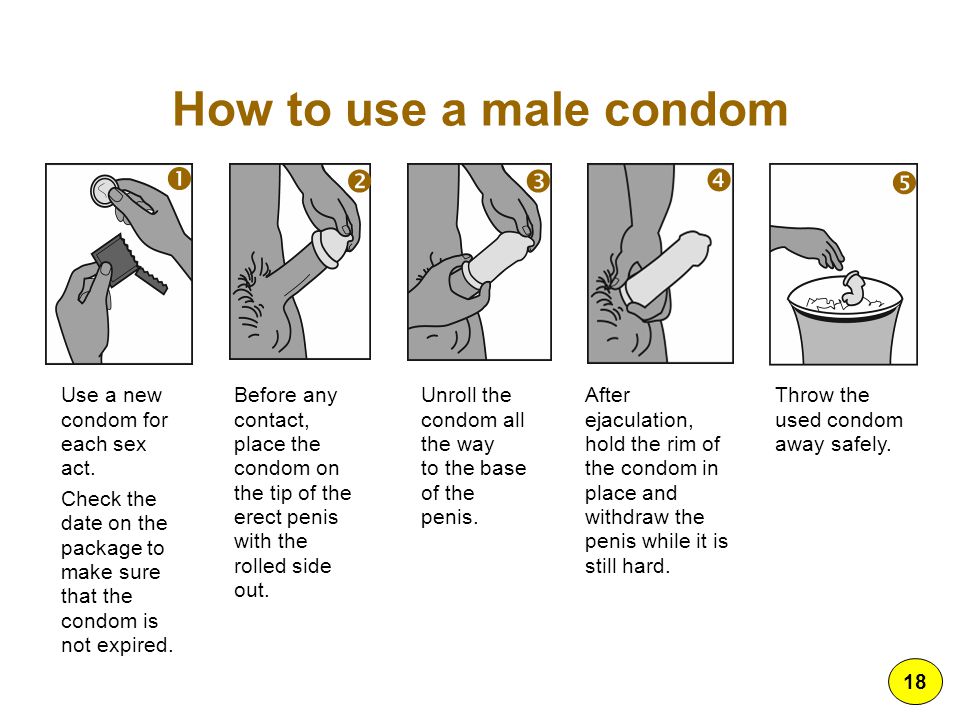 This is done under sedation or general anesthesia.
This is done under sedation or general anesthesia. - Natural miscarriage: If it's safe, you may be able to watch and wait to see if your body eventually releases the pregnancy tissues. It can sometimes take days or weeks for this to start. Your healthcare provider will let you know if this is an option for you. You will experience cramping, abdominal pain and bleeding once the miscarriage begins.
- Medication-induced miscarriage: You may be given a medication called misoprostol to trigger your body to miscarry. This moves the process along and eliminates the time waiting for a miscarriage to start on its own. You will have cramping, abdominal pain and bleeding within 30 minutes to ten hours of taking the medication.
A follow-up appointment is usually scheduled four to six weeks after a miscarriage or D&C. You may be given another ultrasound to confirm the uterus is empty. Your healthcare provider will check for signs of infection and make sure there were no complications.
What are the complications of a blighted ovum?
Complications of a blighted ovum are uncommon, but the possible complications could include:
- Excessive bleeding or hemorrhage.
- Infection.
- Scarring (from the D&C procedure).
- Tears in the uterus (from the D&C procedure).
How long does it take to recover from a blighted ovum?
Recovering from a blighted ovum miscarriage or D&C can last from one or two weeks to a month. Cramping generally lasts up to a week, but bleeding can last several weeks. Your bleeding should get lighter until it stops completely.
You can resume normal activities when you feel comfortable. Bleeding can increase with strenuous activity or exercise. Hormones may remain in your body and delay your menstrual cycle. Most people will get their period within four to six weeks after a blighted ovum.
It may take longer to recover emotionally from a blighted ovum miscarriage. You may have feelings of sadness, anger or confusion. It’s OK to take time to grieve. Ask your friends and family for support.
It’s OK to take time to grieve. Ask your friends and family for support.
Prevention
Can a blighted ovum be prevented?
A blighted ovum can’t be prevented. Some couples may want to do genetic testing on the tissue inside the uterus. This checks for underlying causes of your miscarriage and can be helpful to couples who have experienced multiple pregnancy losses.
Outlook / Prognosis
How soon after a blighted ovum can I get pregnant again?
Most healthcare providers recommend having one or two regular menstrual cycles before trying to conceive again after any type of miscarriage.
What are my chances of having another blighted ovum?
Your chances of having another blighted ovum are low. Most people go on to have healthy, full-term pregnancies. If you experience more than one blighted ovum, your healthcare provider may suggest testing to determine if there is an underlying cause.
Living With
When should I see my healthcare provider?
Call your healthcare provider right away if you have any of these symptoms:
- Excessive bleeding from your vagina.

- Dizziness or fainting.
- Fever that does not go away.
- Symptoms that get worse over time.
- Severe pain that isn’t helped with pain medicine.
When should I go to the ER?
Go to the nearest ER If you experience heavy vaginal bleeding — more than two pads per hour for two consecutive hours — or have symptoms of anemia like dizziness, palpitations or paleness.
What questions should I ask my doctor?
Losing a pregnancy is upsetting and confusing. Do not be embarrassed to ask any questions you have. It's completely normal to have questions and feel emotional during this time. Some questions you may ask are:
- Can I let my body miscarry or should I take medication to induce a miscarriage?
- What are the risks of miscarriage?
- Do I have to have a D&C?
- What are the risks of a D&C?
- How long can I expect to bleed or have cramping?
- Is there any indication this will happen again?
- When can I start trying to conceive?
- Do I need to come back for another ultrasound?
Frequently Asked Questions
Is a blighted ovum considered a miscarriage?
Yes, a blighted ovum is a miscarriage. A miscarriage is a loss of pregnancy before 20 weeks. A blighted ovum is considered an early miscarriage because it occurs before 13 weeks of pregnancy.
A miscarriage is a loss of pregnancy before 20 weeks. A blighted ovum is considered an early miscarriage because it occurs before 13 weeks of pregnancy.
How long can you carry a blighted ovum?
The amount of time you can carry a blighted ovum varies. Your placenta will continue to grow and release hormones without an embryo. For some people, a miscarriage can occur within a few days or weeks. Others may still believe they are pregnant only to discover a blighted ovum at their first ultrasound.
Can a blighted ovum turn into a baby?
No, an empty gestational sac will not turn into an embryo. The formation of the embryo occurs within two weeks of conception. By the time the gestational sac is formed, the cells should have already formed the embryo. Your healthcare provider will be able to examine your gestational sac to confirm that no embryo has developed.
Do hCG levels rise with blighted ovum?
Yes, most of the time hCG levels will rise, giving you a positive pregnancy test and symptoms of pregnancy. This is because the placenta continues to give off hCG even if an embryo is not present. The hormone hCG is sometimes called the pregnancy hormone because it is only produced if you are pregnant.
This is because the placenta continues to give off hCG even if an embryo is not present. The hormone hCG is sometimes called the pregnancy hormone because it is only produced if you are pregnant.
Is a blighted ovum more common with IVF?
A blighted ovum is not more common with IVF (In Vitro Fertilization). Your chances of having a blighted ovum with IVF treatment are about the same as they would be with a natural conception.
A note from Cleveland Clinic
Losing a pregnancy is difficult. If you are struggling after a miscarriage, speak with your healthcare provider so they can recommend support groups or counselors. Finding support may help you get through this hard time. Most people who have had a blighted ovum will go on to have a healthy pregnancy.
what you need to know about it, facts about the largest cell in the female body
The egg is the largest and perhaps the most unusual cell in your body. Nevertheless, at school, almost nothing is told about her. Check: suddenly some information was previously unknown to you.
Check: suddenly some information was previously unknown to you.
Tags:
Women Health
Interesting Facts
Getty Images
The egg is larger than any other cell in the body, and in addition, it has properties that many do not suspect. We tell the most interesting.
Do not self-medicate! In our articles, we collect the latest scientific data and the opinions of authoritative health experts. But remember: only a doctor can diagnose and prescribe treatment.
Two Scientific Egg Facts You Might Have Forgotten
Types of Eggs
Let's start with the basics. The ovum is a special cell. In the scientific world, there is a whole system of its classification. According to the position of the yolk, the human egg belongs to the acelital type, because it is not present in our cells. In addition, in the process of evolution, people as a species have a very special path of embryonic development, so that the nucleus in human eggs is in the center and therefore they are also considered isolecithal. Among other things, the egg is called so precisely because it looks like an egg and contains parts that are visually similar to it.
In addition, in the process of evolution, people as a species have a very special path of embryonic development, so that the nucleus in human eggs is in the center and therefore they are also considered isolecithal. Among other things, the egg is called so precisely because it looks like an egg and contains parts that are visually similar to it.
Development and structure of the egg
The development of the egg begins with the growth of follicles located in the ovaries. A mature female ovum has a spherical shape and contains the following parts:
- The nucleus, from which the division of the egg begins after fertilization
- The primary membrane that separates the egg from other cells
- Vitelline inclusions
- and nourishes the cell)
- Polar body (this is where the inactivated X chromosomes are located in the egg, which, in the process of DNA formation, are transferred to the embryo by the mother for dose compensation of genes).

ADVERTISING - CONTINUED BELOW
How many eggs are in a woman's body
The maturation of an egg is very different from the development of a spermatozoon. In men, sex cells are constantly being produced, and if, say, a young man behaved badly in April, and then changed his mind and corrected himself, then July spermatozoa may turn out to be quite high-quality. A woman's egg is much more sensitive because it does not renew itself and the entire "set" of germ cells is given out from birth. All the harmful things that you loaded into your body at least at 5, at least at 30 years old, will settle in the body. Remember: every bad habit greatly worsens the quality of the egg and can affect the health of the unborn baby, so you need to take care of yourself.
The number of eggs in a woman is limited, but there are quite a lot of them. When a newborn girl is born, both ovaries contain about two million follicles where the egg lives, as well as her future "sisters" in the form of oocytes. They are all dormant until puberty, but some die before you reach your prime.
They are all dormant until puberty, but some die before you reach your prime.
By the time of the first menstruation (menarche), only three hundred to four hundred thousand full-fledged eggs remain in the body of the future woman. On average, the reproductive age of a woman is 40-46 years, so from the beginning of menstruation to their cessation, you have to go through about 300-400 menstrual cycles. Approximately the same number of eggs (an average of 1 egg per cycle) will eventually mature in your body and some of them will get a chance to create a new life. At the same time, 2 eggs rarely mature, but if this happens, a woman has a chance to give birth to fraternal twins when pregnancy occurs.
How the egg matures
The mechanics of the process is such that the development of the egg begins in the ovary in a special follicle. At the same time, the egg does not live alone: in the first phase of the menstrual cycle, a small number of follicles begin to actively grow. They release female sex hormones, estrogens, into the blood. The more follicles are included in this race, the more hormones enter the bloodstream and the more noticeable your femininity is. But after ten days, all follicles, except for one, regress. Once this happens, all of them can be written off, except for one - the dominant follicle. He alone continues to grow until the formation of a full-fledged egg.
They release female sex hormones, estrogens, into the blood. The more follicles are included in this race, the more hormones enter the bloodstream and the more noticeable your femininity is. But after ten days, all follicles, except for one, regress. Once this happens, all of them can be written off, except for one - the dominant follicle. He alone continues to grow until the formation of a full-fledged egg.
The dominant follicle grows larger (up to 2 cm in diameter) until it bursts and releases the egg towards the spermatozoon into the fallopian tube, where fertilization can occur. Actually, this moment is called "ovulation" (from the Latin ovum - "egg"). It comes, as a rule, in the middle of the cycle about 14-16 days before menstruation. The release of the egg is accompanied by changes visible on ultrasound: the edges of the burst follicle in the ovary gather like a bud and form a corpus luteum. It is in the second phase of the menstrual cycle that it begins to produce another female sex hormone - progesterone, which is necessary for the maintenance and development of pregnancy.
I see the target! What does the egg cell do in the uterus
No one will allow the egg to swim for a long time and swim far. The egg after ovulation does not live long, so almost immediately it is picked up by the fringes of the fallopian tube and driven into the funnel: then it can only move towards the uterus. The spermatozoon and the egg should meet exactly in the fallopian tube, but this is already the initiative of the spermatozoon: it strives for unity, while the egg itself, not paying attention to the "boyfriend", continues to make its way to the final destination of the journey. Fertilized or not, the egg will get there! After entering the uterus, the egg will already decide what to do next: if the spermatozoon has invaded it, it will begin to settle down, fixing itself in the endometrium - the inner, mucous layer of the uterus: the next 9she (that is, not quite she) will spend months here. If the egg has finished its journey alone, it will send a signal to the corpus luteum and die. The corpus luteum will also cease to function and rejection of the endometrium (menstruation) will begin. At the same time, it is not difficult to calculate how long the egg cell lives. She has 2 days for this whole trip.
The corpus luteum will also cease to function and rejection of the endometrium (menstruation) will begin. At the same time, it is not difficult to calculate how long the egg cell lives. She has 2 days for this whole trip.
How an egg ovulates
- Here the scheme is clear: ovulation on average occurs 14 days before menstruation and lasts 48 hours. And just in these 48 hours, conception is most likely - the egg is no longer in the ovary, it moves towards the uterus. But we know that “in general” and “on average” is far from being the case for everyone and not always. Sometimes the circuit gets blocked and stops working. Therefore, one should study not the general rules, but one's native body.
- The rhythm of ovulation may change with endocrine diseases, after abortion, childbirth. There are periods without ovulation and ovulation without menstruation. Nursing mothers and menopausal women are often sure that they are not in danger of becoming pregnant.
 Sometimes this leads to different incidents like “Honey, we are going to have a baby. Again...»
Sometimes this leads to different incidents like “Honey, we are going to have a baby. Again...» - Young mothers should know that the process of egg maturation is inhibited only if the interval between breastfeedings does not exceed three hours during the day and four at night. I decided to rest longer - and that's it, you are at risk. Even women over 50 cannot sleep peacefully. The reproductive function fades away gradually - sometimes the maturation of a "late" egg is possible. European gynecologists are sounding the alarm: a frivolous attitude to contraception is increasingly leading to pregnancy in women after menopause.
- 2-3 cycles a year without ovulation is the medical norm. Count. If the duration of your cycle is 21-23 days, and your period is 6-7 days, then ovulation occurs immediately after menstruation. Strong love excitement and stress also lead to unexpected results. Additional ovulation may occur. Especially without a permanent partner. And with an irregular menstrual cycle, ovulation and menstruation can coincide in time.
 All this means that the mathematical calculation of "safe" or "favorable" days is useless and even harmful.
All this means that the mathematical calculation of "safe" or "favorable" days is useless and even harmful.
Features of ovulation of the egg
It happens that the leader in the race is not revealed, and at some point all the follicles stop growing. None of them get big enough to burst and help organize the meeting of the egg and sperm. Doctors call it "polycystic ovary syndrome" and consider it the most common cause of infertility. Fortunately, it is now being treated.
There is another side of the coin. The spermatozoon retains its reproductive properties almost twice as long as the egg! Hiding in the nooks and crannies of your reproductive system, he can treacherously wait for her for three or even four days. Therefore, pregnancy sometimes occurs even if sex was on a “safe” day. In this scenario, there is also a risk that the fertilized egg will not reach the uterus and attach itself in the tube, causing an ectopic pregnancy. Therefore, in case of any unusual course of menstruation (delay, poor discharge), buy a test as soon as possible and contact a gynecologist! First of all, it is necessary to exclude an ectopic pregnancy.
Therefore, in case of any unusual course of menstruation (delay, poor discharge), buy a test as soon as possible and contact a gynecologist! First of all, it is necessary to exclude an ectopic pregnancy.
Fertilization of the egg.
The most ancient way to calculate ovulation is calendar. But he's not very reliable. Therefore, mankind has always sought to invent something more convincing.
The first scientific method was the measurement of basal body temperature. Every morning, without getting out of bed (after 6 hours of sleep), you measure the temperature in the rectum. Then you build a graph and see where the flat line grows sharply. This will be the day of ovulation. But in addition to ovarian function, basal temperature is affected by inflammatory diseases, fever, sexual intercourse 3-4 hours before its measurement, alcohol. So the method is as unreliable as it is anti-erotic.
The first ovulation test strips appeared more than 20 years ago. They look and work like pregnancy tests. One strip - no ovulation, two - yes. Sometimes the indicator is a change in color.
They look and work like pregnancy tests. One strip - no ovulation, two - yes. Sometimes the indicator is a change in color.
Some tests determine the onset of ovulation by saliva. The "answer" is visible through a microscope. The structure of saliva during ovulation is different from that on other days. However, there is a great risk of wishful thinking.
The most reliable ways to "catch" a day favorable for conception is to determine the hormonal background and ultrasound 3-4 days before the expected ovulation of the egg, in general, doctors will help you with this. And we have collected tips that answer the question of how to get pregnant faster.
Egg donation and other times when assisted reproductive technologies are needed
ART - assisted reproductive technologies - is a set of measures applied to people who dream of having children, but do not have the natural opportunity to do so. ART includes IVF, germ cell cryopreservation, egg donation, surrogacy and other methods suitable for both men and women.
Some ladies have to seek the help of reproductive specialists due to physiological characteristics. For example, when your supply of oocytes has dried up and a donor egg is needed. Or when a woman focuses on her career and puts off getting pregnant until she is over 40. In this case, she can pre-freeze the egg, and then return to the issue of childbearing. Also, ART cannot be dispensed with if there is a problem of obstruction of the fallopian tubes or they are absent. IVF usually helps in this situation.
How IVF works
IVF is perhaps the most famous of all reproductive technologies. It is prescribed when a woman does not have fallopian tubes or their obstruction is observed, as well as when other methods have failed.
IVF allows you to achieve the desired pregnancy in almost hopeless cases, but this process is not quick. It consists of the following steps:
Ovarian stimulation and follicle growth monitoring
The essence of this stage is that the ovaries produce as many follicles with eggs as possible in one cycle. It is believed that the younger the patient, the more they will turn out and the better the eggs are formed in the ovaries.
It is believed that the younger the patient, the more they will turn out and the better the eggs are formed in the ovaries.
Ultrasound-guided follicle puncture
On the 8-10th day of stimulation, each female egg is ready for puncture and high-quality material is obtained from mature follicles. With stimulation, two eggs, or 3 eggs, can mature. Or maybe 5 eggs, 9or much more. No matter how many there are, they will all be taken away during the puncture and, together with the follicular fluid, will be placed in a special tube.
In Vitro Fertilization
At this stage, active spermatozoa are added to the eggs in the test tube, where each egg after fertilization lives for another five days.
First day of embryo growth
Hooray! A miracle happened, fertilization happened, but this is only the beginning of the journey. It is on the first day after fertilization that each bad zygote, a fertilized egg, is rejected if it does not pass genetic selection. Each healthy egg contains 23 pairs of chromosomes, the same number as in the sperm. If everything goes right, they unite and a healthy embryo is obtained. If not, the embryo dies.
It is on the first day after fertilization that each bad zygote, a fertilized egg, is rejected if it does not pass genetic selection. Each healthy egg contains 23 pairs of chromosomes, the same number as in the sperm. If everything goes right, they unite and a healthy embryo is obtained. If not, the embryo dies.
The next stage is from the second to the fifth day of embryo growth
Doctors continue to observe the division of the egg and evaluate its quality. The division must be even and correct.
Embryo transfer
Approximately on the sixth day after fertilization, the grown embryo is transferred into the uterus of the expectant mother. It usually doesn't hurt at all.
Confirmation of pregnancy
Ten days later, a woman donates blood for hCG to confirm the fact of pregnancy, and two weeks later she does an ultrasound to make sure once again that everything is fine with the embryo.
Since not all cells survive even during IVF, at the stimulation stage they are “grown” with a margin so that approximately 4 eggs are produced at a time. Good extra embryos are frozen and sent to a cryobank, the same place where all the genetic material given by the egg donor is stored. If a woman is able, it is better for her to donate an egg herself, but if this is not possible, she can consider donor programs and choose the future genetic mother of her child.
Of course, it will be great if everything is in order with your health and you can safely dispose of your eggs in the way that suits you. But if you suddenly have difficulties in becoming a mother, do not be afraid to try different methods. Now in the arsenal of doctors there are technologies that can solve almost any problem.
Text: Olga Lutovinova, obstetrician-gynecologist, doctor of the highest category
Photo by Getty Images
5 facts about the egg that you did not know
What can we advise you?Did you know that:
- ✅ The egg is the largest cell in the human body.
 It is 4 times the size of a skin cell, 26 times the size of an erythrocyte (red blood cell), and 16 times the size of a sperm cell. After all, an egg is the size of a grain of sand and can be seen without a microscope.
It is 4 times the size of a skin cell, 26 times the size of an erythrocyte (red blood cell), and 16 times the size of a sperm cell. After all, an egg is the size of a grain of sand and can be seen without a microscope. - ✅ The egg cell lives inside the follicle for a long time. Many follicles containing eggs in a woman of reproductive age are immature. The fate of such follicles is different: some rest for many years before entering the path to ovulation, others die prematurely at different stages of development. Approximately 150 days before the culmination of its life - ovulation (when the egg leaves the follicle into the pelvic cavity for fertilization), the follicle receives a hormonal signal to grow and develop and begins its journey in the company of 10-12 more brothers.
- ✅The life of the egg after ovulation is short. After ovulation, the egg enters the pelvic cavity and is sent to the fallopian tube, where it lives only 12-24 hours. If fertilization does not occur during this time, then programmed cell death will occur.

- ✅ The egg as a passive player in the process of conception: waiting for the sperm running towards it - this is just a myth. It is from the egg that it depends which sperm enters it to fuse the genetic materials. An important mission of the egg is the selection of sperm with intact DNA.
- Ovulation of more than one follicle is quite common. Superovulation occurs in 10% of a woman's cycles, which means that the chance of fertilizing 2 eggs and conceiving fraternal twins is as much as 2 times a year.
- ❗️ Soon we will tell you even more interesting facts about the female and male body.
Follow the news!
Categories
See also:
Delayed motherhood program
09/27/2022
Delayed motherhood is a program that allows you to plan a pregnancy at a later reproductive age and preserve your genetic material at a young age.






